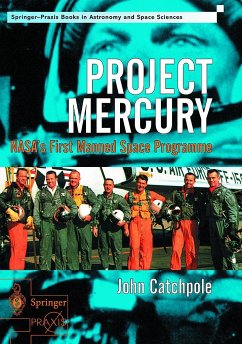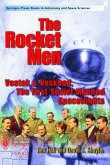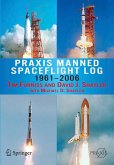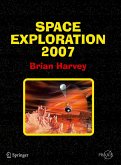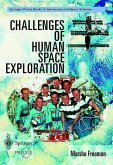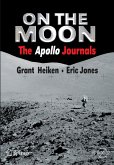Project Mercury will offer a developmental resume of the first American manned spaceflight programme and its associated infrastructure, including accounts of space launch vehicles. The book highlights the differences in Redstone/Atlas technology, drawing similar comparisons between ballistic capsules and alternative types of spacecraft. The book also covers astronaut selection and training, as well as tracking systems, flight control, basic principles of spaceflight and detailed accounts of individual flights.
Hinweis: Dieser Artikel kann nur an eine deutsche Lieferadresse ausgeliefert werden.
Hinweis: Dieser Artikel kann nur an eine deutsche Lieferadresse ausgeliefert werden.
From the reviews:
"John Catchpole's new account of this pioneering project is most welcome. Catchpole's account is not so much a chronological history ... as it is a description of the project and its various elements - though of course there is a lot of historical material in it. ... So all in all you get a lot for your money in these 485 pages ... . this is a very good book ... ." (David Maclennan, Liftoff, Issue 219, 2004)
"This book describes the first US manned space program in sufficient detail, using not only NASA sources but also alternative sources. He has gathered all the information from the diverse places, sorted it out for us and has produced a history in sufficient detail ... . A number of appendices provide some useful additional information, including ... a number of useful tables. ... And it contains some quite historic photos which I have not seen before. An extremely useful book, definitely worth the money." (Jos Heyman, News Bulletin of theAstronautical Society of Western Australia, Vol. 27 (2), 2001)
"It's a good read for the space buff and certainly fills in a lot of interesting background ... . The production quality is good, with clear printing, good illustrations some of which I've never seen before and about the correct number of them to offset the text. ... it's quite easy to read and ... it kept my attention pretty much to the end. ... It does fill a gap by providing technical background, and some interesting asides ... ." (John Davies, The Observatory, Vol. 122 (1167), 2002)
"John Catchpole's new account of this pioneering project is most welcome. Catchpole's account is not so much a chronological history ... as it is a description of the project and its various elements - though of course there is a lot of historical material in it. ... So all in all you get a lot for your money in these 485 pages ... . this is a very good book ... ." (David Maclennan, Liftoff, Issue 219, 2004)
"This book describes the first US manned space program in sufficient detail, using not only NASA sources but also alternative sources. He has gathered all the information from the diverse places, sorted it out for us and has produced a history in sufficient detail ... . A number of appendices provide some useful additional information, including ... a number of useful tables. ... And it contains some quite historic photos which I have not seen before. An extremely useful book, definitely worth the money." (Jos Heyman, News Bulletin of theAstronautical Society of Western Australia, Vol. 27 (2), 2001)
"It's a good read for the space buff and certainly fills in a lot of interesting background ... . The production quality is good, with clear printing, good illustrations some of which I've never seen before and about the correct number of them to offset the text. ... it's quite easy to read and ... it kept my attention pretty much to the end. ... It does fill a gap by providing technical background, and some interesting asides ... ." (John Davies, The Observatory, Vol. 122 (1167), 2002)

